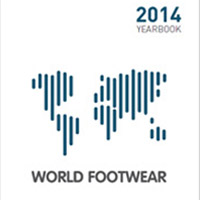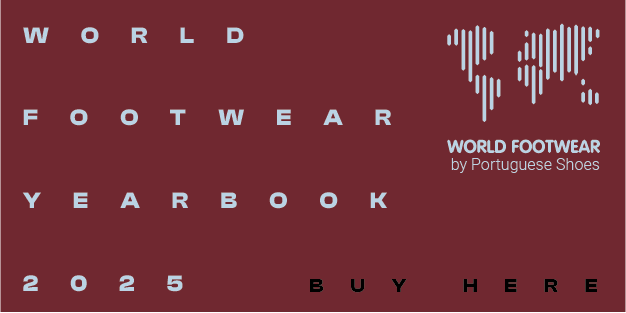The end of low cost footwear?

The study Footwear Consumer 2030 predicts that in the next 15 years the price of footwear will increase as a reflection of the growing production costs in China and as a result of a lack of alternative suppliers of low cost workforce
Study available here.
Up until the 1970s, production and consumption shared the same geographic areas, with most part of the manufacturing process concentrated in one determined place. Around this time a relocation process was initiated with some companies moving towards countries with available lower costs’ workforce. An example of this was the movement of manufacturing units from companies in the North of Europe to countries in the south of the continent, such as Portugal.
Three decades later, as China became a member of the World Trade Organisation the picture of the manufacturing world changed (again) and the Asian country became the most competitive country for production. Low salaries and a large available workforce attracted investors from all over the world to China and hundreds of companies relocated their manufacturing units, or started to subcontract locally, resulting in a huge demand for workers. As China assisted to its economic growth, the income status of its active population improved and they became less willing to receive low salaries and more eager to fight for better paying conditions. China’s economic growth and the consequences in labour costs are not the only elements to bear in mind in the rising production costs in the country’s industries. The Chinese currency, the Yuan, is on an upward movement of appreciation against the dollar, after two decades of a fixed exchange rate policy.
At the same time, markets started to experience an increasing pressure from leather prices, and in a decade leather footwear became 7.5% more expensive (year on year), while price of rubber and plastic products only increased by 2.7% per year. This shift had an impact on the mix of products sold, with a sharp decline on leather footwear exports, both in volume and value, and a steady increase on exports of rubber and plastic shoes.
In 2003 leather footwear exports represented 60% of the total value of footwear exports and rubber and plastic only 20%. In just one decade, this picture inverted, and the value of leather footwear is below 50% of total exports. While this occurred, production costs started to rise in China, the largest footwear manufacturer in the world, representing a concern for local businesses and for companies in the US and Europe sourcing in China. As a response, there is a recent echo claiming that companies will tend to move production nearshore, while they tend to avoid the high travelling costs and China’s inability to deal with small orders with quick delivery (the core business of some industry players in Europe). However, the numbers don't seem to support the existence of a massive shift in the way production is organised around the world. According to the World Footwear Yearbook, in the US, near to the market production has only increased from 2% to 3% during the last 5 years.
Growing production costs will generate a higher retail price, with impact on quantities sold. While looking to buy smaller quantities, consumers might also be less prone to discard footwear away. Buying expensive leather shoes might be seen as an investment, and as such consumers will favour a long life cycle product. This will create new business opportunities for repair services and businesses related to products and services intended to extend the life of their shoes.
A combination of all these elements will once again pose new challenges to footwear entrepreneurs and businessmen, who will need to evaluated the impact of the growing production costs in their businesses. In the past this has led them to get the backpack off the closet and look for low cost alternatives for manufacturing, which is in the emergence of happening again.
Up until the 1970s, production and consumption shared the same geographic areas, with most part of the manufacturing process concentrated in one determined place. Around this time a relocation process was initiated with some companies moving towards countries with available lower costs’ workforce. An example of this was the movement of manufacturing units from companies in the North of Europe to countries in the south of the continent, such as Portugal.
Three decades later, as China became a member of the World Trade Organisation the picture of the manufacturing world changed (again) and the Asian country became the most competitive country for production. Low salaries and a large available workforce attracted investors from all over the world to China and hundreds of companies relocated their manufacturing units, or started to subcontract locally, resulting in a huge demand for workers. As China assisted to its economic growth, the income status of its active population improved and they became less willing to receive low salaries and more eager to fight for better paying conditions. China’s economic growth and the consequences in labour costs are not the only elements to bear in mind in the rising production costs in the country’s industries. The Chinese currency, the Yuan, is on an upward movement of appreciation against the dollar, after two decades of a fixed exchange rate policy.
At the same time, markets started to experience an increasing pressure from leather prices, and in a decade leather footwear became 7.5% more expensive (year on year), while price of rubber and plastic products only increased by 2.7% per year. This shift had an impact on the mix of products sold, with a sharp decline on leather footwear exports, both in volume and value, and a steady increase on exports of rubber and plastic shoes.
In 2003 leather footwear exports represented 60% of the total value of footwear exports and rubber and plastic only 20%. In just one decade, this picture inverted, and the value of leather footwear is below 50% of total exports. While this occurred, production costs started to rise in China, the largest footwear manufacturer in the world, representing a concern for local businesses and for companies in the US and Europe sourcing in China. As a response, there is a recent echo claiming that companies will tend to move production nearshore, while they tend to avoid the high travelling costs and China’s inability to deal with small orders with quick delivery (the core business of some industry players in Europe). However, the numbers don't seem to support the existence of a massive shift in the way production is organised around the world. According to the World Footwear Yearbook, in the US, near to the market production has only increased from 2% to 3% during the last 5 years.
Growing production costs will generate a higher retail price, with impact on quantities sold. While looking to buy smaller quantities, consumers might also be less prone to discard footwear away. Buying expensive leather shoes might be seen as an investment, and as such consumers will favour a long life cycle product. This will create new business opportunities for repair services and businesses related to products and services intended to extend the life of their shoes.
A combination of all these elements will once again pose new challenges to footwear entrepreneurs and businessmen, who will need to evaluated the impact of the growing production costs in their businesses. In the past this has led them to get the backpack off the closet and look for low cost alternatives for manufacturing, which is in the emergence of happening again.














